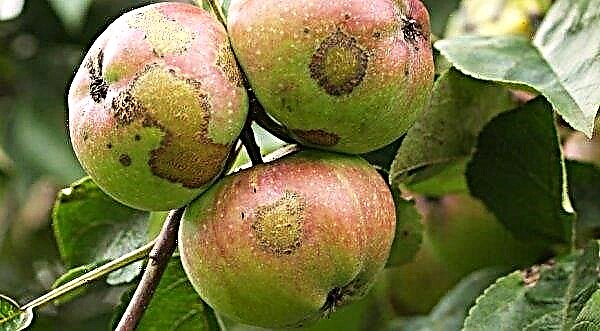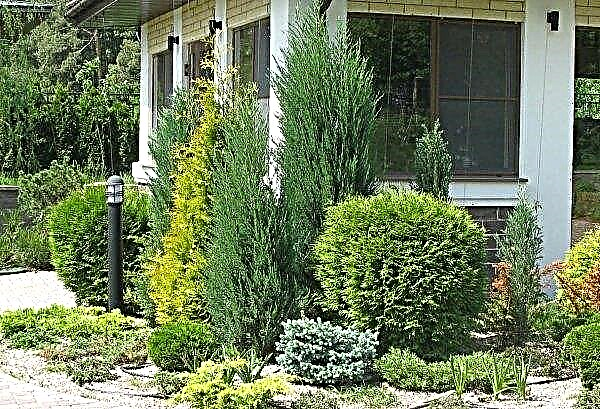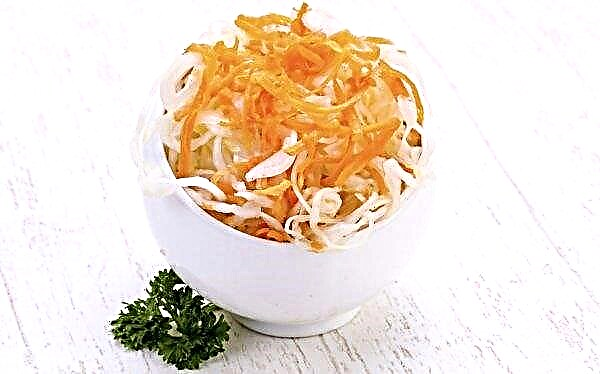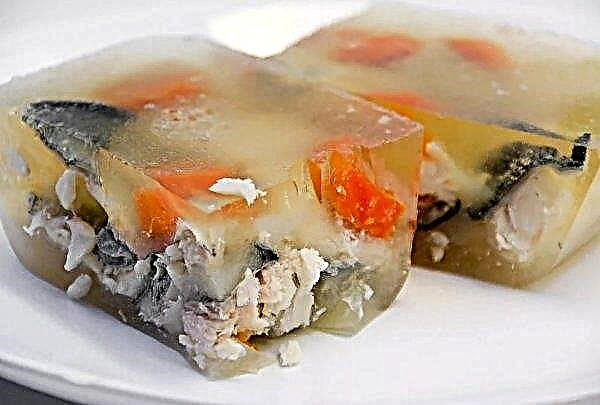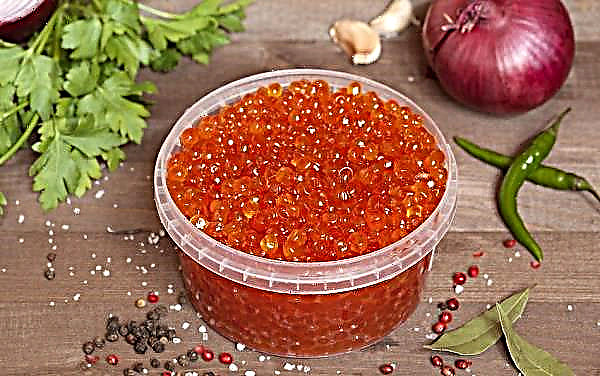Today, there are many grape varieties suitable for making wine from them, and for consumption, as a table look. Attika Kishmish stands out among them - grapes with sweetish, purple-violet grapes that do not have grains, for which gardeners and winemakers especially appreciate it. It is about the features of this variety that will be discussed in the article.
Description and History
Sandless grapes Attika (Attika) is a table early ripe species with a productivity period of 115-120 days.
Attica grapes have the following parameters:
- photophilous look;
- medium-sized bushes; lash maturation is at a high level;
- grafting on tall rootstocks is recommended;
- there are three-, sometimes five-lobed slightly dissected leaves, on their back there is a bristly pubescence;
- bisexual inflorescences;
- cylindrical in shape, large, dense clusters in length have up to 35 cm;
- grapes of 4–6 g each, 25 × 19 mm in size, have an oblong or rounded shape, purple-blue or rich purple, with a characteristic dimple;
- grapes have a dense, non-astringent skin, with a wax coating;
- the flesh of the berries is crisp, the texture of the pulp is dense, the taste is sweet and harmonious, resembles a cherry;
- sugar content of grapes - 16–18%, acidity - less than 6%;
- fruits without grains; sometimes with their rudiments.
Origin of the variety
Attica grapes are the fruit of selection of the French species Alfons Lavalle and Central Asian Kishmish black. The direct creator of the new vine variety was the scientist-breeder from Greece M. Vassilos (Institute of Viticulture, Athens), who developed a hybrid variety in 1979. The sandless hybrid is named after the eponymous, southeastern region of Greece. In the same year, a new variety of culture was introduced to winegrowers, where it was immediately recognized for the excellent characteristics of the original varieties, without transferring their shortcomings to the new hybrid.
Did you know? In the world there are from 10 to 20 thousand varieties of grape varieties.
Productivity and Harvest Dates
The described grapes have excellent characteristics - this is a high-yielding species (about 30 tons of products can be removed from a hectare). The first fruiting of the vine brings up to 8 clusters weighing up to a kilogram each. Harvested, starting in July and ending in mid-August (middle band).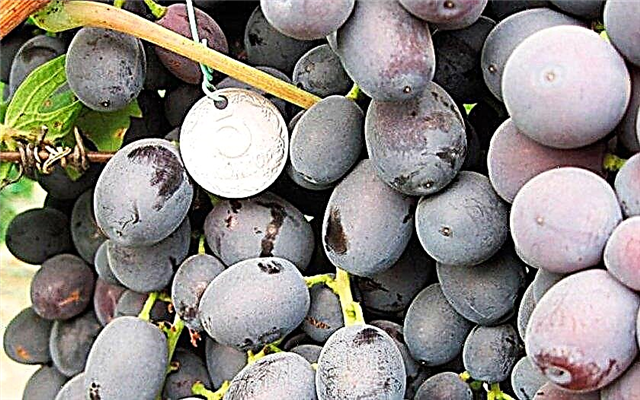
Appointment
The grape fruits of Attica Kishmish are consumed fresh, stewed fruit is preserved with them, and jam and jam are made from it. And fragrant and juicy clusters of Greek raisins are considered excellent material for making wine and liquors from them.
Did you know? To fill one medium bottle of wine, you will need up to 600 large grape berries.
Advantages and disadvantages
The described hybrid of grapes has both many advantages and some disadvantages.
- Grade advantages:
- high frost resistance (up to –20 ... –25 ° С);
- clusters have good transportability;
- the variety is generally undemanding to soil fertility;
- differs in good pollination;
- stable yields in any weather;
- the variety is highly resistant to gray rot;
- large clusters with large grapes;
- after harvesting from the bush, the clusters are well preserved, do not decay, although they have small losses in weight;
- strong bushes with powerful rhizomes;
- unpretentious culture in leaving;
- to attack insect parasites (wasps, aphids, ticks) is highly resistant;
- well takes root on the prevailing stocks;
- Gibberellinum (a hormone of preservation of freshness) is not required.
- Growing attics, you can encounter a number of its shortcomings:
- the vines are prone to congestion;
- the optimum humidity level is constantly required;
- sudden changes in temperature are undesirable;
- poorly tolerates salt marshes and marshes;
- sensitivity to fungal infections (with errors in care).
Features of grape planting
The field health of the crop and the amount of yield directly depend on the observance of the rules of agricultural technology during its cultivation, although special difficulties in the cultivation of the described raisins should not even arise for a beginner winegrower.
Landing time
Attica variety is planted in the spring (April-May) or autumn (early October, and before the first frost) periods.
Selection of seedlings and site preparation
For planting grapes, first of all, you need to choose high-quality seedlings. At the same time, it is advisable to use the services of a specialized nursery - this will be more likely to acquire planting material of the required variety.
The selection of seedlings is carried out according to the following principles:
- a young seedling should have a well-developed root system (2-3 roots) without mechanical damage;
- roots on the cut should be white (in no case not brown);
- the eyes on the seedling with a light touch should not separate;
- before planting, it is necessary to soak the seedlings in water for 12-24 hours, and then cut off the annual shoots, leaving 3-4 eyes.
Important! Before planting grape seedlings, it is unacceptable to dry their root system.
After choosing seedlings, you need to prepare a place on the site for planting.
To do this, it is important to consider the following nuances:
- A place for shrubs should be cleared of stones, debris and weeds.
- The site should be well lit by the sun and be even.
- Vineyard rows should be located on the south side of the plot.
- Blowing rows of drafts is unacceptable.
- Before planting bushes, it is necessary to pre-fertilize the plot (in the fall) by applying a mixture of fertilizers (per 1 m²) to the soil: superphosphate (200 g) + wood ash (250 g) + ready-made rotted manure (10 kg).
- Dig the fertilized area to the depth of the shovel bayonet and level the ground with a rake.

Landing technology
When planting Attica grapes, it is necessary to observe step-by-step planting technology:
- Dig a hole to a depth of 50 cm, and a width - the size of the root system.
- In the aisles, a distance of 1.5-2 m is left.
- Cover the bottom of the hole with a layer of crushed stone (15 cm), on which to lay thin wood chips.
- In the center of the pit, pour a mound of prepared soil (the soil is mixed with a small amount of organic and complex mineral fertilizer).
- Immerse the rhizome of the bush in a mash of clay and burnt mullein (2: 1).
- Cut the seedling into 2 buds, treating the cut with molten paraffin.
- Put the bush prepared for planting into the hole, spreading the roots on the surface of the mound of soil poured into the hole.
- To further supply moisture and make the necessary dressings in any corner of the hole, a tube is installed through which they will be fed.
- Fill the hole with the rest of the soil, carefully ramming it layer by layer.
- Pour each bush with 4-5 buckets of heated water.
- Mulch the soil near the bushes with rotted manure or compost.
- For further successful cultivation, it is necessary to place vertical supports or trellises near each bush so that the vine can be tied up as it grows, which minimizes its possible damage.
Important! When planting vines, it is important to consider the type of soil. In addition to the method of planting grape seedlings in holes, they use the method of planting it in trenches (on sandstones), and on loamy soils and with a close occurrence of groundwater, it is recommended that the vine be planted on ridges.
Growing and further care
Further vine care involves timely watering and top dressing, sanitary pruning of unproductive shoots, as well as weed removal and vine preservation in the winter.
Watering and fertilizing
To get the crop declared by the manufacturer, you need to water and feed young grape bushes in a timely manner using the following technology:
- Young seedlings require daily irrigation of at least 10 liters for each bush (provided there is no rain).
- It is unacceptable to wet and dry the soil under the vine.
- It is very important that sufficient moisture is received during the filling period.
- During the first year after planting, the vine is not additionally fertilized.
- With further care, grapes are fertilized 3 times per season - in April-May (with nitrogen-containing compounds, exclusively before flowering), June-August (potash and phosphorus) and October-November (organic).

Bush shaping and pruning
For the correct formation of bushes, it is necessary to pinch each green shoot immediately before flowering (in a few days). This will allow the grapes to direct all their efforts to the formation of large clusters. Attica will also benefit from sanitary pruning of shoots, which is carried out in August with the attenuation of growth processes. Using a secateurs, the tops of the lashes 35–40 cm long are removed, leaving several leaves feeding the lashes over the brush. This procedure helps the fruits ripen better. Another pruning of grape bushes is carried out before covering them for the winter, after slowing down the process of sap flow in the vines.
Did you know? Almost as many nutrients (except fat) are found in grape berries as are found in cow's milk.
It is important to remember:
- the crop is formed on an annual whip, developed on a 2-year-old vine;
- the main pruning is carried out at the end of the sleeves, where fruit links are formed annually, consisting of 2 arrows (cropped annual shoots 8–10 mm thick, with 10–12 buds and a knot of substitution);
- scourged whips are cut into a ring.

Soil weeding
Weeding the soil under a grape bush consists of loosening its top layer and removing weeds. The procedure is carried out using a hoe, without dipping its blade too deep, so as not to damage the surface roots of the culture. In addition, this will allow the soil to be loose and grainy, which contributes to good aeration.
Shelter for the winter
Despite the fact that the described hybrid of grapes can withstand unstable low temperatures, it is still considered a thermophilic variety that must be protected for a cold period of time.
Important! When sheltering vines for winter conservation, it is imperative to protect the shoots from damage caused by rodents by wrapping each trunk with roofing material.
For additional protection of the hybrid, apply:
- mulching the soil with sawdust and peat;
- the construction of a frame over it like a greenhouse from burlap, dry grass and pine lapnik (covering material must be dry);
- trenches in which they put the vine removed from the supports and protect it from the cold with the help of covering materials (you can not use the film);
- before sheltering the vine from the cold, it is treated with a 5% solution of iron or copper sulfate.

Pest and Disease Control
With proper care, the described grape variety is not afraid of pests and diseases.
Acceptable shrub care consists of the following preventative actions:
- Do not over-moisten the soil and do not allow it to dry out.
- From the attack of wasps, leafworms, aphids, as well as from diseases, use special traps and seasonal spraying with fungicidal preparations (Bordeaux mixture, colloidal sulfur, topaz, iron sulfate, Nitrafen, Polykhom, Euparen, etc. - according to the instructions) .
- Periodically feed bushes with complex fertilizers.
- Loosen and mulch the soil under the bushes.
The agrotechnical measures carried out for the hybrid Attica Kishmish grape variety are similar to the measures used for the other varieties of the crop: timely watering, top dressing and proper processing are important for it. Applying the recommendations outlined above, even novice growers will be able to get this high-yielding and non-capricious grape variety.

